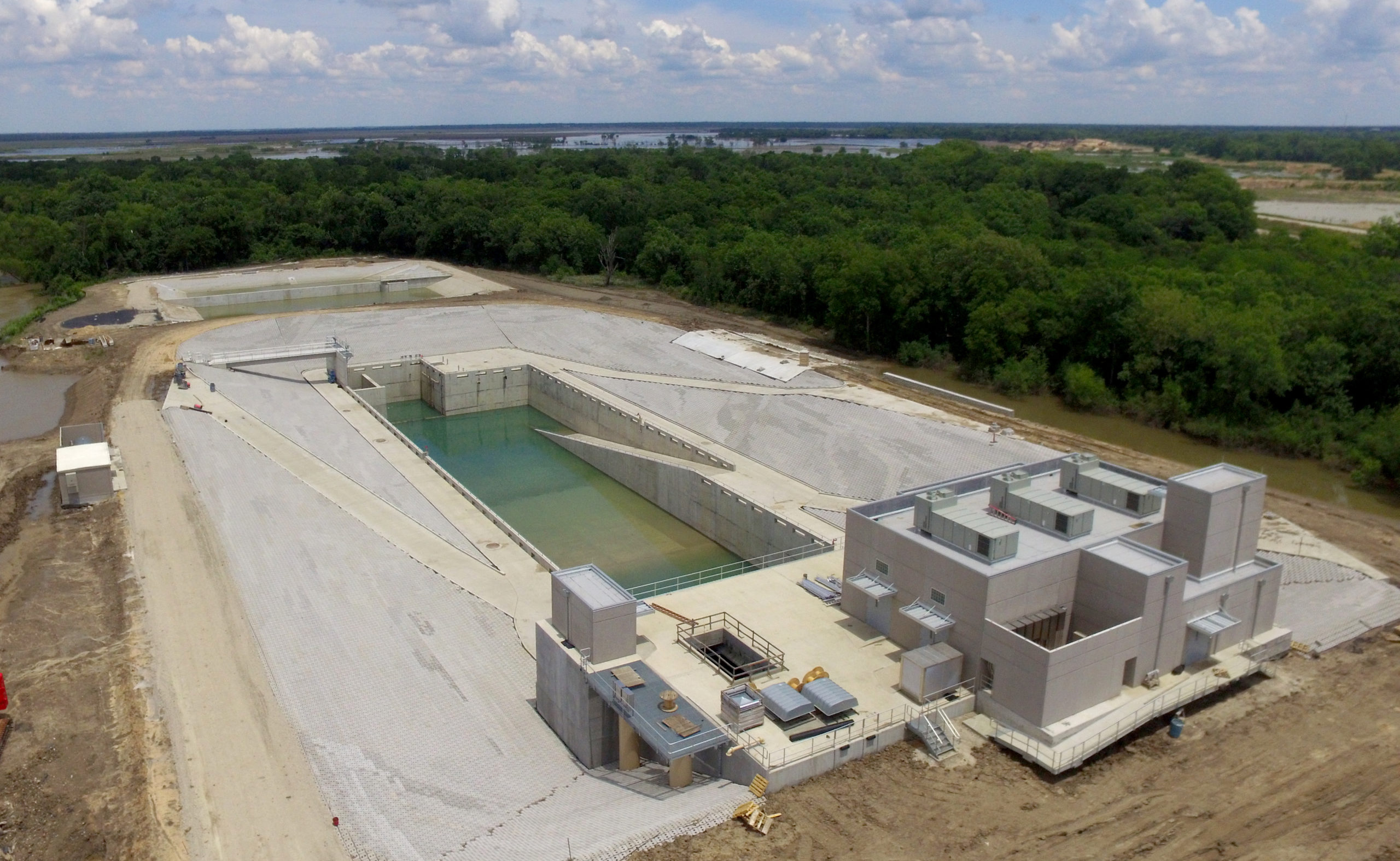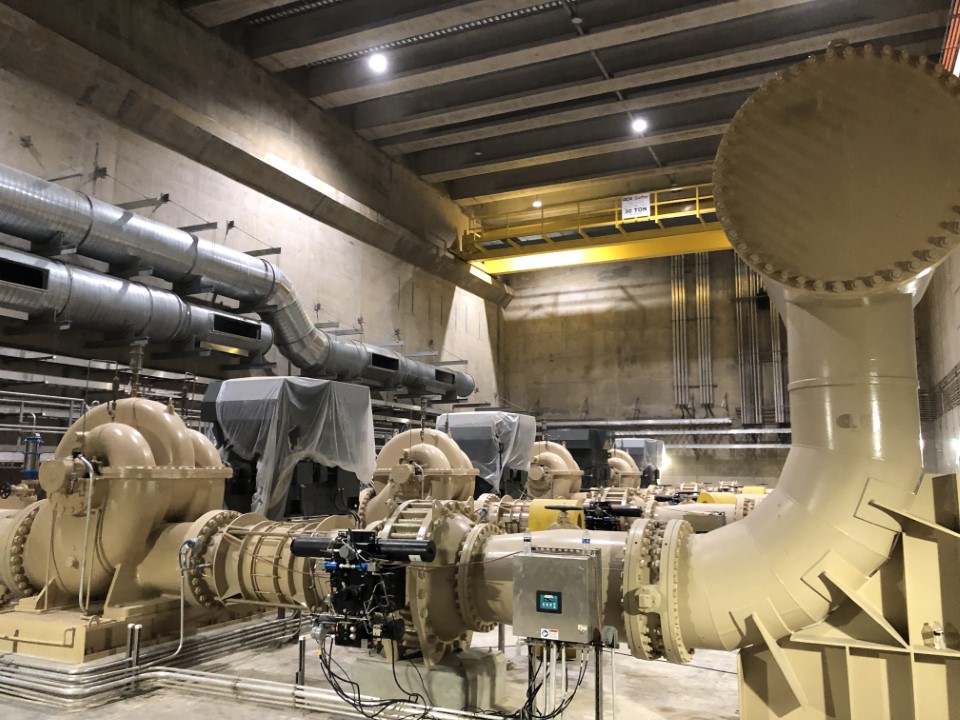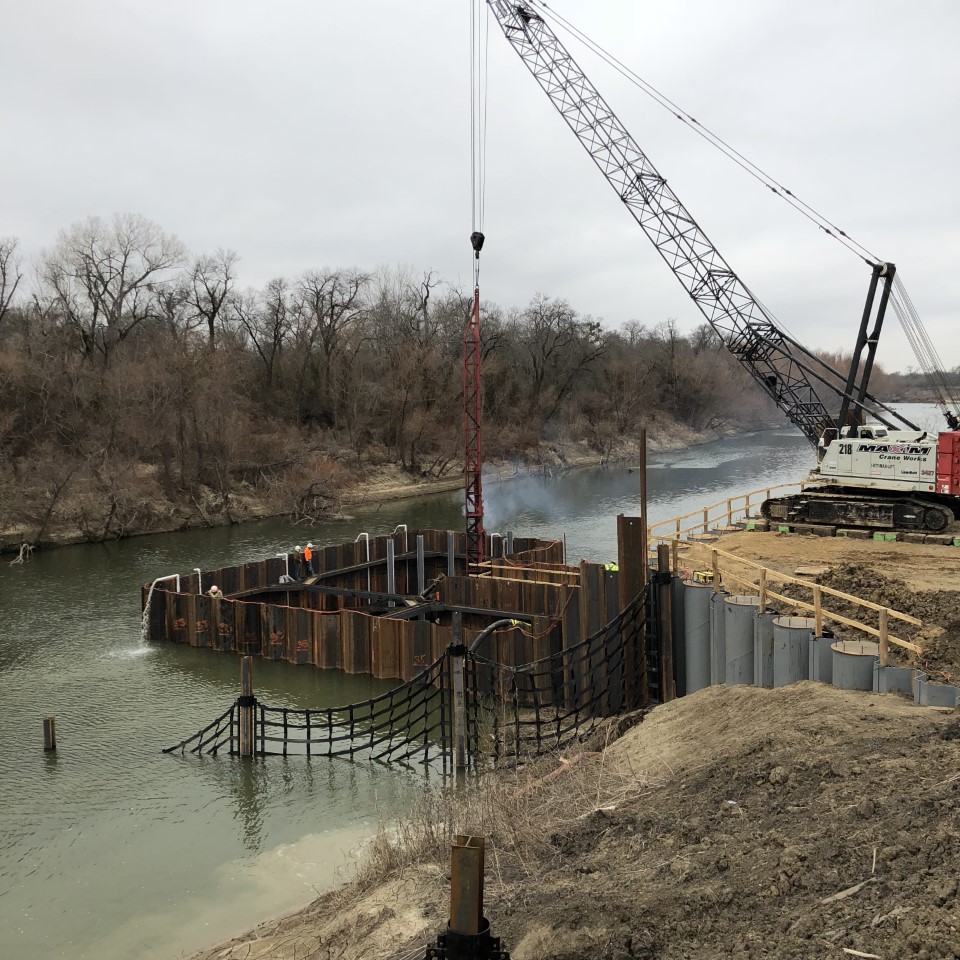Main Stem Pipeline and Pump Station Honored by APWA Texas
Four Freese and Nichols projects received awards from the American Public Works Association, Texas Chapter. The Trinity River Main Stem Pipeline and Pump Station was named Public Works Project of the Year in the Environmental Category, more than $75 million.
The North Texas Municipal Water District’s Main Stem project consists of a pump station and large-diameter transmission pipeline that provides additional raw water to the East Fork Raw Water Supply Project — a constructed wetland where raw water is polished via naturally occurring processes — and then, is further pumped to Lavon Lake and the Wylie Water Treatment Plant complex. This supply not only bridged the gap between water supply contract expiration and the initial deliveries of treated water from the future Bois d’Arc Lake project, but it also secures and solidified another long-term water supply source for NTMWD.


The pump station utilized several hydraulic modeling technologies to evaluate, improve and review the design components. Analysis of the Trinity River provided the project team crucial design information of flood elevations and sediment deposition for planning maintenance activities. Many river intake pump stations include two pump stations-a low-lift into a sedimentation basin, and a high-head pump station to send the water down the pipeline. The Main Stem Pump Station uses a gravity-fed sediment capturing forebay to eliminate the low-head pump station. Examination of the forebay, intake box, and pump intakes facilitated modifying the design resulting in capital cost savings, less maintenance and improved life of the pumps. Study of the discharge piping, flow meter station, and transmission system identified potential concerns and led to improvements that were made to the design. Overall, the modeling performed was critical to aiding the pump station design. This modeling effort was performed at significant cost to NTMWD but was repaid more than double in reduced construction costs. These models, while not unique individually, combine to represent an innovative approach to the design of pump stations.
Unusual Accomplishments Under Adverse Conditions
Constructing river intake pump stations with long transmission systems presents unique challenges. Sediment handling, flooding, riverbank stabilization, and intake design and construction can create headaches and hazards for the pump station constructors as well as maintenance and operation personnel. The pump station site and pipeline corridor flooded multiple times during construction. Impacts ranged from stuck vehicles and equipment to design-altering riverbank loss. The owner, engineer, CMAR and contractors worked together to address the challenges as they arose.
One of the notable accomplishments during these adverse conditions is the 72-inch Raw Water Pipeline. Most of the 14-mile raw water pipeline was installed in the flood plain. The project observed record rainfall during construction, which meant flooded trenches and difficult access. The contractor was able to strategize construction in key areas during wet and dry seasons to keep the project on schedule.
Another notable accomplishment is the adaptation of the Intake Piping Design. One of the flooding events removed approximately 30 feet of the bank from the intake location. This necessitated the installation of additional intake pipe supports in the river. The project team came up with a solution using structural steel elements that could be installed in the wet by divers in lieu of the concrete design that had to be formed and placed inside a dry cofferdam.
